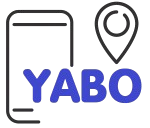Custom T-shirt Printing Business

1. Type of Business: Custom T-shirt Printing
2. Key Products for Sale
Unique and creative custom-designed T-shirts targeting specific niches.
3. Technology Considerations
- Include Direct Garment (DTG) printing for high-quality and detailed designs.
- E-commerce platform for online sales.
4. Market for the Product
- Targeted towards individuals passionate about specific themes or cultures (e.g., Kenyan matatu culture).
- Online market through social media platforms and e-commerce websites.
5. Key Inputs into the Business
- High-quality T-shirt materials.
- Creative designs from the artist/entrepreneur.
- DTG printing technology.
- Skilled labor for design validation.
7. Product Preparation Process
- Design creation and validation.
- DTG printing for quality and detailed prints.
- Quality check and packaging.
8. Quality Considerations
- Ensure designs are at least 300 digital pixels with a transparent background.
- Use DTG printing for an accurate representation of the artwork.
9. Cost of Investment
- Design tools and software- Canva and other online subscriptions cost around 6000 for one year
- DTG printing equipment A good one costs around 3000-5000 KSH but you can buy a second-hand printer online which is 1500
- Initial inventory of T-shirt materials 10,000
- Online store setup.
- Cost of ink, screens, and other consumables 8,000
10. Required Operational Infrastructure
- Design studio/workspace. The beauty of this business is that you can do it at home.
- DTG printing setup.
- Packaging and shipping area. Cost will depend on the location but with pickup mtaani, it is significantly cheaper.
11. Most Suitable or Viable Location of the Business
- Proximity to courier services for shipping.
- Accessible location for potential customers to visit.
12. Potential Sources of Investment Capital
1. Personal savings.
2. Small business loans.
3. Crowdfunding for special editions.
13. Requirements for Effective Management
- Skilled designer or partnership with a designer.
- Operations manager for inventory and fulfillment.
- Marketing Specialist for online promotion.
14. Role of Mobile Phone and ICT
- E-commerce website for online orders.
- Social media platforms for marketing.
- Communication with customers through mobile.
15. Statutory Regulations and Licenses
- Business registration.
- Compliance with copyright laws.
- Health and safety regulations for the workspace.
16. Pricing
- Competitive pricing based on design intricacy and quality.
- Consider production costs and market demand.
17. Profitability
- Profit margin depends on pricing strategy and sales volume.
- Aim for scalability to increase profitability over time.
- Estimated income 50,000 KSH – 1,000,000 KSH
18. Next Steps to Take
- Launch an e-commerce platform.
- Initiate targeted marketing campaigns.
- Monitor customer feedback and iterate designs based on demand.
- Explore collaborations and partnerships for increased visibility

